Libin Yang
ASPO: Adaptive Sentence-Level Preference Optimization for Fine-Grained Multimodal Reasoning
May 25, 2025Abstract:Direct Preference Optimization (DPO) has gained significant attention for its simplicity and computational efficiency in aligning large language models (LLMs). Recent advancements have extended DPO to multimodal scenarios, achieving strong performance. However, traditional DPO relies on binary preference optimization, rewarding or penalizing entire responses without considering fine-grained segment correctness, leading to suboptimal solutions. The root of this issue lies in the absence of fine-grained supervision during the optimization process. To address this, we propose Adaptive Sentence-level Preference Optimization (ASPO), which evaluates individual sentences for more precise preference optimization. By dynamically calculating adaptive rewards at the sentence level based on model predictions, ASPO enhances response content assessment without additional models or parameters. This significantly improves the alignment of multimodal features. Extensive experiments show that ASPO substantially enhances the overall performance of multimodal models.
A Multi-Agent Framework Integrating Large Language Models and Generative AI for Accelerated Metamaterial Design
Mar 25, 2025



Abstract:Metamaterials, renowned for their exceptional mechanical, electromagnetic, and thermal properties, hold transformative potential across diverse applications, yet their design remains constrained by labor-intensive trial-and-error methods and limited data interoperability. Here, we introduce CrossMatAgent--a novel multi-agent framework that synergistically integrates large language models with state-of-the-art generative AI to revolutionize metamaterial design. By orchestrating a hierarchical team of agents--each specializing in tasks such as pattern analysis, architectural synthesis, prompt engineering, and supervisory feedback--our system leverages the multimodal reasoning of GPT-4o alongside the generative precision of DALL-E 3 and a fine-tuned Stable Diffusion XL model. This integrated approach automates data augmentation, enhances design fidelity, and produces simulation- and 3D printing-ready metamaterial patterns. Comprehensive evaluations, including CLIP-based alignment, SHAP interpretability analyses, and mechanical simulations under varied load conditions, demonstrate the framework's ability to generate diverse, reproducible, and application-ready designs. CrossMatAgent thus establishes a scalable, AI-driven paradigm that bridges the gap between conceptual innovation and practical realization, paving the way for accelerated metamaterial development.
Instruction-Aligned Visual Attention for Mitigating Hallucinations in Large Vision-Language Models
Mar 24, 2025Abstract:Despite the significant success of Large Vision-Language models(LVLMs), these models still suffer hallucinations when describing images, generating answers that include non-existent objects. It is reported that these models tend to over-focus on certain irrelevant image tokens that do not contain critical information for answering the question and distort the output. To address this, we propose an Instruction-Aligned Visual Attention(IAVA) approach, which identifies irrelevant tokens by comparing changes in attention weights under two different instructions. By applying contrastive decoding, we dynamically adjust the logits generated from original image tokens and irrelevant image tokens, reducing the model's over-attention to irrelevant information. The experimental results demonstrate that IAVA consistently outperforms existing decoding techniques on benchmarks such as MME, POPE, and TextVQA in mitigating object hallucinations. Our IAVA approach is available online at https://github.com/Lee-lab558/IAVA.
CoF: Coarse to Fine-Grained Image Understanding for Multi-modal Large Language Models
Dec 22, 2024



Abstract:The impressive performance of Large Language Model (LLM) has prompted researchers to develop Multi-modal LLM (MLLM), which has shown great potential for various multi-modal tasks. However, current MLLM often struggles to effectively address fine-grained multi-modal challenges. We argue that this limitation is closely linked to the models' visual grounding capabilities. The restricted spatial awareness and perceptual acuity of visual encoders frequently lead to interference from irrelevant background information in images, causing the models to overlook subtle but crucial details. As a result, achieving fine-grained regional visual comprehension becomes difficult. In this paper, we break down multi-modal understanding into two stages, from Coarse to Fine (CoF). In the first stage, we prompt the MLLM to locate the approximate area of the answer. In the second stage, we further enhance the model's focus on relevant areas within the image through visual prompt engineering, adjusting attention weights of pertinent regions. This, in turn, improves both visual grounding and overall performance in downstream tasks. Our experiments show that this approach significantly boosts the performance of baseline models, demonstrating notable generalization and effectiveness. Our CoF approach is available online at https://github.com/Gavin001201/CoF.
Enhancing Fine-Grained Vision-Language Pretraining with Negative Augmented Samples
Dec 13, 2024



Abstract:Existing Vision-Language Pretraining (VLP) methods have achieved remarkable improvements across a variety of vision-language tasks, confirming their effectiveness in capturing coarse-grained semantic correlations. However, their capability for fine-grained understanding, which is critical for many nuanced vision-language applications, remains limited. Prevailing VLP models often overlook the intricate distinctions in expressing different modal features and typically depend on the similarity of holistic features for cross-modal interactions. Moreover, these models directly align and integrate features from different modalities, focusing more on coarse-grained general representations, thus failing to capture the nuanced differences necessary for tasks demanding a more detailed perception. In response to these limitations, we introduce Negative Augmented Samples(NAS), a refined vision-language pretraining model that innovatively incorporates NAS to specifically address the challenge of fine-grained understanding. NAS utilizes a Visual Dictionary(VD) as a semantic bridge between visual and linguistic domains. Additionally, it employs a Negative Visual Augmentation(NVA) method based on the VD to generate challenging negative image samples. These samples deviate from positive samples exclusively at the token level, thereby necessitating that the model discerns the subtle disparities between positive and negative samples with greater precision. Comprehensive experiments validate the efficacy of NAS components and underscore its potential to enhance fine-grained vision-language comprehension.
MoDULA: Mixture of Domain-Specific and Universal LoRA for Multi-Task Learning
Dec 10, 2024
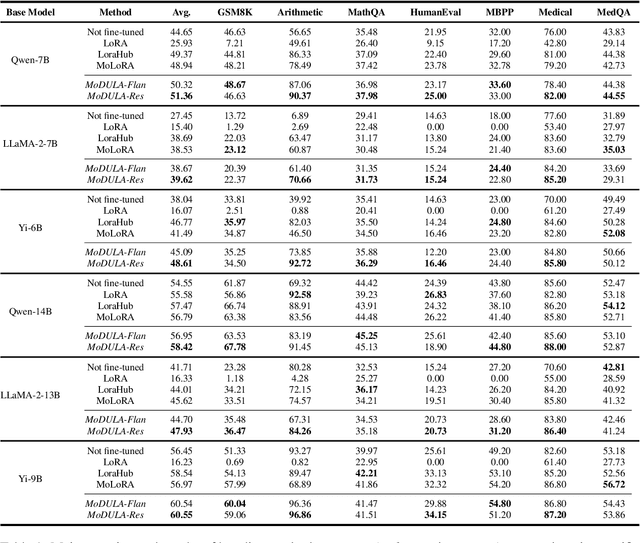
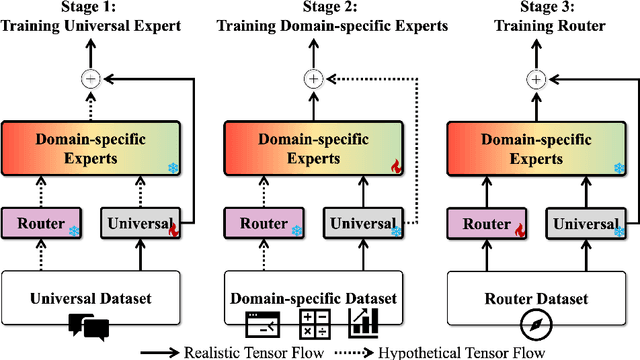
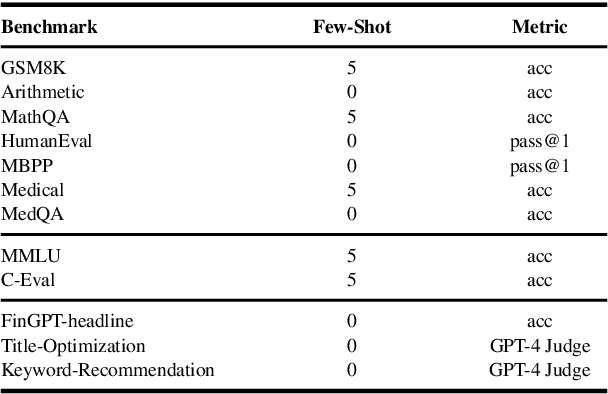
Abstract:The growing demand for larger-scale models in the development of \textbf{L}arge \textbf{L}anguage \textbf{M}odels (LLMs) poses challenges for efficient training within limited computational resources. Traditional fine-tuning methods often exhibit instability in multi-task learning and rely heavily on extensive training resources. Here, we propose MoDULA (\textbf{M}ixture \textbf{o}f \textbf{D}omain-Specific and \textbf{U}niversal \textbf{L}oR\textbf{A}), a novel \textbf{P}arameter \textbf{E}fficient \textbf{F}ine-\textbf{T}uning (PEFT) \textbf{M}ixture-\textbf{o}f-\textbf{E}xpert (MoE) paradigm for improved fine-tuning and parameter efficiency in multi-task learning. The paradigm effectively improves the multi-task capability of the model by training universal experts, domain-specific experts, and routers separately. MoDULA-Res is a new method within the MoDULA paradigm, which maintains the model's general capability by connecting universal and task-specific experts through residual connections. The experimental results demonstrate that the overall performance of the MoDULA-Flan and MoDULA-Res methods surpasses that of existing fine-tuning methods on various LLMs. Notably, MoDULA-Res achieves more significant performance improvements in multiple tasks while reducing training costs by over 80\% without losing general capability. Moreover, MoDULA displays flexible pluggability, allowing for the efficient addition of new tasks without retraining existing experts from scratch. This progressive training paradigm circumvents data balancing issues, enhancing training efficiency and model stability. Overall, MoDULA provides a scalable, cost-effective solution for fine-tuning LLMs with enhanced parameter efficiency and generalization capability.
MLoRA: Multi-Domain Low-Rank Adaptive Network for CTR Prediction
Aug 14, 2024



Abstract:Click-through rate (CTR) prediction is one of the fundamental tasks in the industry, especially in e-commerce, social media, and streaming media. It directly impacts website revenues, user satisfaction, and user retention. However, real-world production platforms often encompass various domains to cater for diverse customer needs. Traditional CTR prediction models struggle in multi-domain recommendation scenarios, facing challenges of data sparsity and disparate data distributions across domains. Existing multi-domain recommendation approaches introduce specific-domain modules for each domain, which partially address these issues but often significantly increase model parameters and lead to insufficient training. In this paper, we propose a Multi-domain Low-Rank Adaptive network (MLoRA) for CTR prediction, where we introduce a specialized LoRA module for each domain. This approach enhances the model's performance in multi-domain CTR prediction tasks and is able to be applied to various deep-learning models. We evaluate the proposed method on several multi-domain datasets. Experimental results demonstrate our MLoRA approach achieves a significant improvement compared with state-of-the-art baselines. Furthermore, we deploy it in the production environment of the Alibaba.COM. The online A/B testing results indicate the superiority and flexibility in real-world production environments. The code of our MLoRA is publicly available.
General2Specialized LLMs Translation for E-commerce
Mar 06, 2024Abstract:Existing Neural Machine Translation (NMT) models mainly handle translation in the general domain, while overlooking domains with special writing formulas, such as e-commerce and legal documents. Taking e-commerce as an example, the texts usually include amounts of domain-related words and have more grammar problems, which leads to inferior performances of current NMT methods. To address these problems, we collect two domain-related resources, including a set of term pairs (aligned Chinese-English bilingual terms) and a parallel corpus annotated for the e-commerce domain. Furthermore, we propose a two-step fine-tuning paradigm (named G2ST) with self-contrastive semantic enhancement to transfer one general NMT model to the specialized NMT model for e-commerce. The paradigm can be used for the NMT models based on Large language models (LLMs). Extensive evaluations on real e-commerce titles demonstrate the superior translation quality and robustness of our G2ST approach, as compared with state-of-the-art NMT models such as LLaMA, Qwen, GPT-3.5, and even GPT-4.
EdgeNet : Encoder-decoder generative Network for Auction Design in E-commerce Online Advertising
May 09, 2023


Abstract:We present a new encoder-decoder generative network dubbed EdgeNet, which introduces a novel encoder-decoder framework for data-driven auction design in online e-commerce advertising. We break the neural auction paradigm of Generalized-Second-Price(GSP), and improve the utilization efficiency of data while ensuring the economic characteristics of the auction mechanism. Specifically, EdgeNet introduces a transformer-based encoder to better capture the mutual influence among different candidate advertisements. In contrast to GSP based neural auction model, we design an autoregressive decoder to better utilize the rich context information in online advertising auctions. EdgeNet is conceptually simple and easy to extend to the existing end-to-end neural auction framework. We validate the efficiency of EdgeNet on a wide range of e-commercial advertising auction, demonstrating its potential in improving user experience and platform revenue.
Variance-Reduced Heterogeneous Federated Learning via Stratified Client Selection
Jan 15, 2022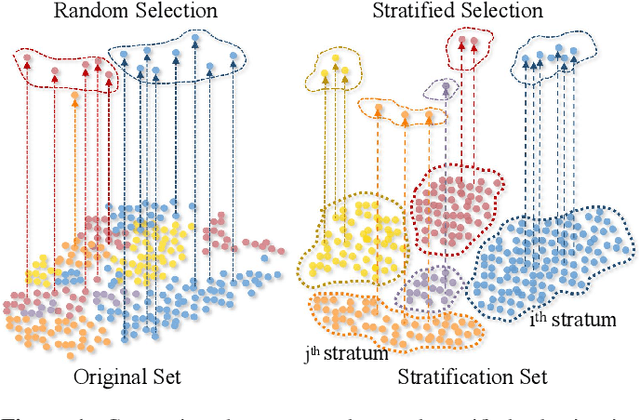
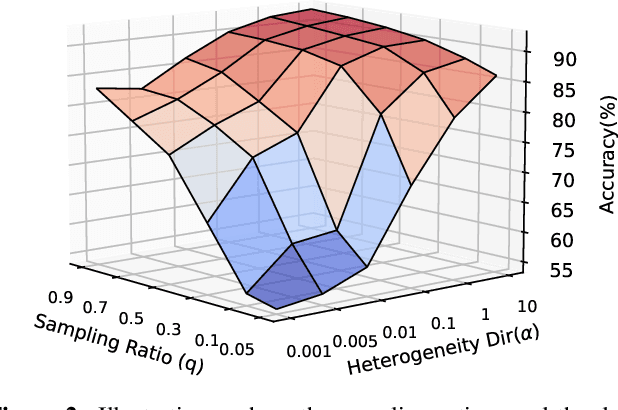
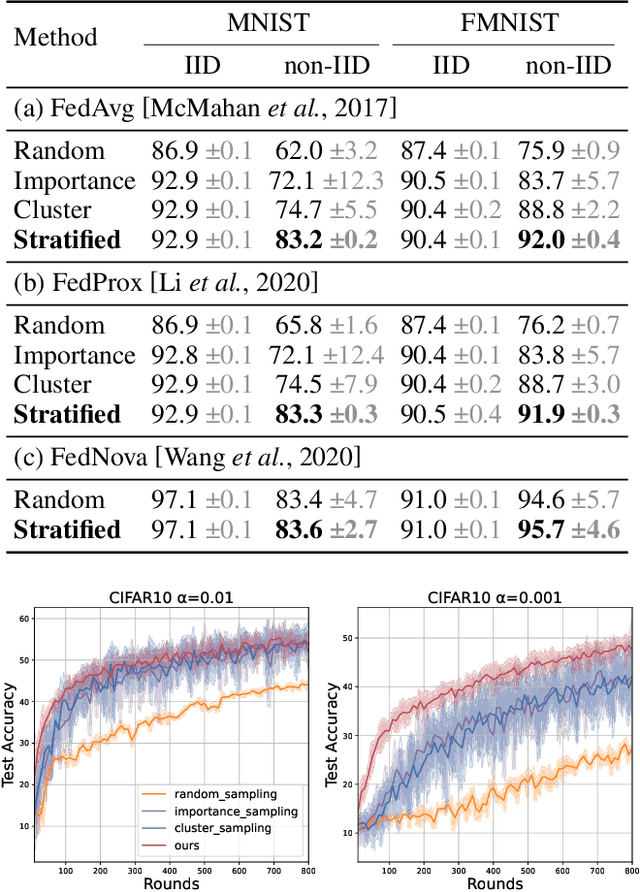
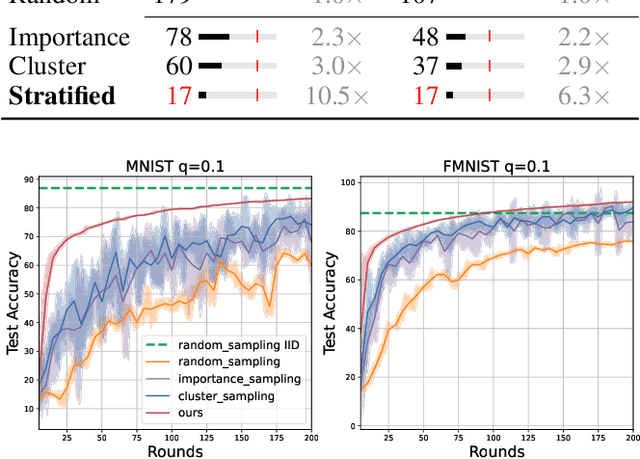
Abstract:Client selection strategies are widely adopted to handle the communication-efficient problem in recent studies of Federated Learning (FL). However, due to the large variance of the selected subset's update, prior selection approaches with a limited sampling ratio cannot perform well on convergence and accuracy in heterogeneous FL. To address this problem, in this paper, we propose a novel stratified client selection scheme to reduce the variance for the pursuit of better convergence and higher accuracy. Specifically, to mitigate the impact of heterogeneity, we develop stratification based on clients' local data distribution to derive approximate homogeneous strata for better selection in each stratum. Concentrating on a limited sampling ratio scenario, we next present an optimized sample size allocation scheme by considering the diversity of stratum's variability, with the promise of further variance reduction. Theoretically, we elaborate the explicit relation among different selection schemes with regard to variance, under heterogeneous settings, we demonstrate the effectiveness of our selection scheme. Experimental results confirm that our approach not only allows for better performance relative to state-of-the-art methods but also is compatible with prevalent FL algorithms.
 Add to Chrome
Add to Chrome Add to Firefox
Add to Firefox Add to Edge
Add to Edge